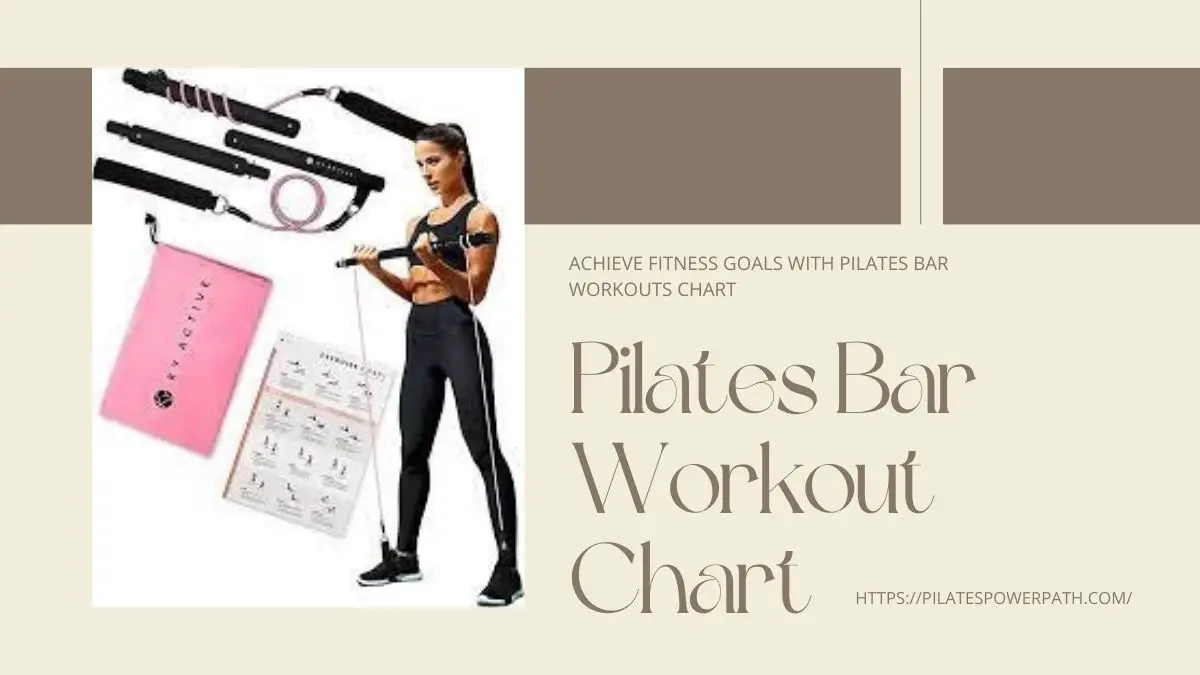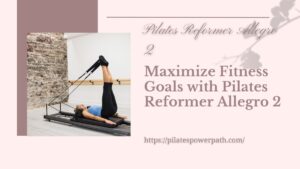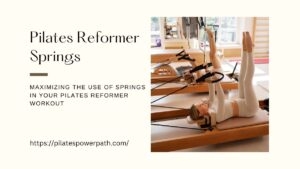A Pilates Bar, workout chart often referred to as a “Pilates Stick,” is a versatile fitness tool designed to replicate the functionality of the Pilates reformer, making it an excellent choice for home workouts. Using resistance bands and a lightweight bar, Pilates Bar workouts can offer an all-in-one solution for strength training, flexibility, and balance.
The benefits of Pilates Bar workouts are manifold. They can cater to a range of fitness levels, from beginners to seasoned athletes, providing a balanced workout that targets all major muscle groups. Regular practice can result in improved posture, increased muscle tone, and enhanced core strength. Additionally, Pilates Bar workouts prioritize controlled, focused movements, which can be beneficial for mind-body connection and stress reduction.
This article will delve into the specifics of Pilates Bar workouts, offering a comprehensive guide and chart to help you make the most of this effective fitness tool. We will explore various exercises you can perform with a Pilates Bar, provide a workout chart to guide your routine and share tips on how to maximize your training for optimal results. So, whether you’re new to Pilates or an experienced practitioner looking to enhance your home workout, this guide has got you covered.
Understanding the Pilates Bar and its Benefits
Explanation of the Pilates Bar equipment
The Pilates Bar, or Pilates Stick, is a dynamic fitness tool mirroring the functionality of the traditional Pilates reformer. It comprises a lightweight, often collapsible central bar, with resistance bands attached to either end. This simple design belies its versatility, providing a myriad of workout options targeting all major muscle groups.
Advantages of using a Pilates Bar
There are numerous advantages to using a Pilates Bar for your workouts. It offers a balanced fitness solution, combining elements of strength training, flexibility, and balance exercises. This all-in-one approach can deliver a full-body workout, making it a highly efficient tool for those with limited time.
Comparison with traditional Pilates exercises
When compared to traditional Pilates exercises, which often require large, expensive equipment, the Pilates Bar is a cost-effective and space-saving alternative. It allows the user to perform a variety of reformer-style exercises from the comfort of their home, without sacrificing the quality of the workout. Furthermore, the portability of the Pilates Bar makes it ideal for maintaining workout routines while traveling or for outdoor workouts.
Through regular use of the Pilates Bar, you can expect to see enhanced muscle tone, stronger core muscles, and improved posture. These physical benefits, combined with the mindfulness of controlled movements, can also foster a stronger mind-body connection and contribute to stress reduction.
Read More: Ultimate Guide to Pilates Reformer Covers
Essential Pilates Bar Workout Chart Exercises
Warm-up routine with the Pilates Bar
Begin your Pilates Bar workout with a comprehensive warm-up to prepare your muscles and joints for the exercises ahead. A balanced warm-up might include light cardio, such as marching in place, followed by dynamic stretches using the Pilates Bar. For example, hold the bar overhead and bend it side-to-side to warm the obliques, or hold it in front of you and twist it from the waist to engage the core.
Core strengthening exercises
The Pilates Bar is an ideal tool for targeted core workouts. Simple yet effective exercises include the Roll Up and the Hundred. For the Roll, lie on your back with the bar overhead and slowly roll up to a seated position, using the resistance bands to assist and increase the challenge. The Hundred involves pulsing your arms by your sides while holding the Pilates Bar, with the option to add leg lifts for additional core engagement.
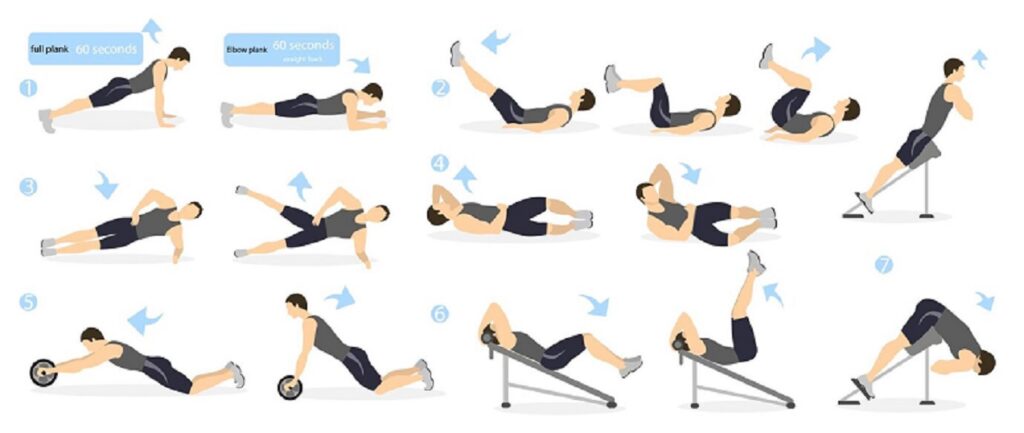
Lower body workouts
For the lower body, exercises like the Squat and the Lunge can provide a dynamic workout when performed with the Pilates Bar. Hold the bar overhead or in front of you for added resistance and stability as you perform these movements. Remember to keep your form precise, with knees tracking over your toes during squats and lunges to protect the joints.
Upper body workouts
Pilates Bar exercises for the upper body can include Bicep Curls, Tricep Extensions, and Overhead Presses. By adjusting the tension in the resistance bands, you can increase or decrease the challenge in these exercises to suit your fitness level.
Cool-down and stretching exercises
Finally, a cool-down routine with the Pilates Bar can help to increase flexibility and reduce muscle tension. Use the bar to assist in stretches such as the Forward Fold and the Overhead Side Stretch. These stretches, performed with mindful, slow movements, can also contribute to relaxation and stress reduction.
Creating an Effective Pilates Bar Workout Chart
An effective workout chart can guide your Pilates Bar routine, helping you to achieve your fitness goals with structured, tailored exercises.
Organizing exercises for different fitness levels
Beginners might start with basic exercises, focusing on mastering form and building strength. Intermediate users can incorporate more complex movements and increase resistance band tension. Advanced practitioners can challenge themselves with high-intensity workouts and faster transitions between exercises.
Structuring routines for specific goals (e.g., weight loss, muscle toning)
If weight loss is your goal, combine aerobic exercises with targeted Pilates Bar movements, keeping rest periods short to maintain a high heart rate. For muscle toning, slow, controlled exercises with appropriate resistance will help to shape and strengthen the body.
Duration and frequency recommendations
Initially, aim for 20-30 minute sessions, 2-3 times a week. As your fitness level improves, gradually increase the duration and frequency of your workouts. Always ensure you include time for a warm-up and cool-down to prevent injury.
Tips for maintaining proper form
Always keep your core engaged during exercises. Ensure your movements are controlled and precise, irrespective of the speed of execution. Check your alignment frequently to ensure you are maintaining correct positioning and maximizing the effectiveness of each exercise.
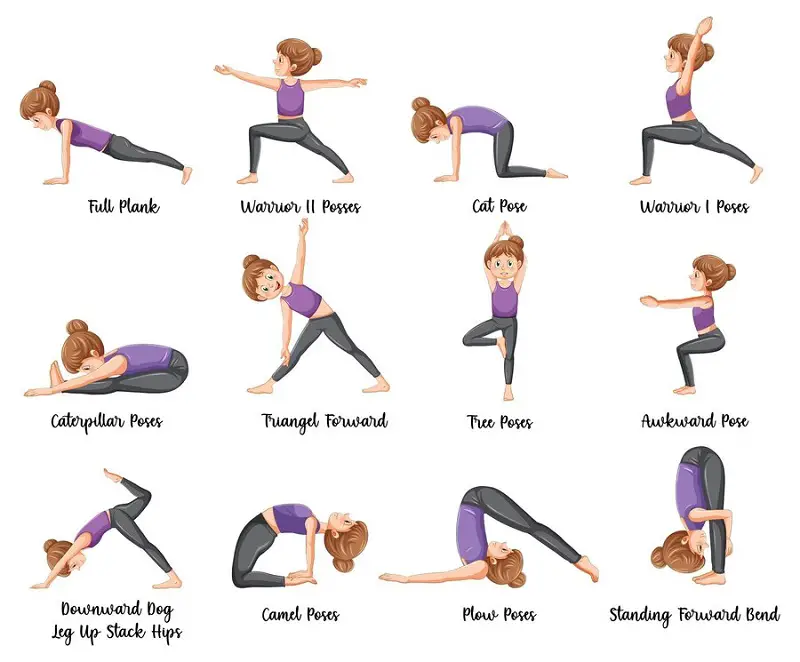
Benefits of Using a Pilates Bar Workout Chart
Utilizing a workout chart as part of your fitness regimen presents a multitude of benefits that contribute to an efficient and effective exercise journey.
Tracking progress and improvement
A workout chart serves as a tangible record of your fitness journey, documenting each workout, the exercises performed, and any progress made. This record allows you to analyze improvements over time, be it increased resistance, more reps, or better form. Such tracking is not only motivating but also helpful in identifying areas that may require extra focus.
Staying consistent and motivated
Consistency is key in any fitness program. A workout chart offers a structured plan, which can aid in maintaining regular workouts, reducing the likelihood of skipping sessions. The visible regimen can also boost motivation, serving as a reminder of the commitment made towards healthier living and encouraging adherence to the planned workouts.
Avoiding workout plateaus
A workout chart can help prevent plateaus — periods where progress stagnates — by ensuring a varied and comprehensive exercise routine. By tracking your workouts, you can easily identify when it’s time to change or intensify your routine, therefore keeping your muscles challenged and promoting continuous improvement.
Customizing workouts to individual needs
Lastly, a workout chart allows for customization according to individual fitness goals, capabilities, and preferences. Whether you’re focused on strengthening specific muscle groups, enhancing overall stamina, or losing weight, a workout chart can be tailored to meet these unique needs, ensuring you get the most out of your workouts.
Beginner’s Routine
Starting with the Pilates Bar, beginners can focus on mastering the basic movements and building foundational strength. A sample routine might include:
- Warm-up: Overhead Side-to-Side Bends (10 reps), Waist Twists (10 reps)
- Core exercises: Roll Up (10 reps), The Hundred (1 minute)
- Lower body: Squats (15 reps), Lunges (10 reps each leg)
- Upper body: Bicep Curls (15 reps), Overhead Presses (15 reps)
- Cool-down: Forward Fold (30 seconds), Overhead Side Stretch (30 seconds on each side)
Intermediate Routine
As you become more comfortable, you can begin to incorporate more challenging exercises and increase the resistance of the bands. An intermediate routine might include:
- Warm-up: Overhead Side-to-Side Bends (15 reps), Waist Twists (15 reps)
- Core exercises: Roll Up with Leg Lift (10 reps), The Hundred with Leg Lifts (1 minute)
- Lower body: Squats with Overhead Press (15 reps), Lunges with Bicep Curls (10 reps each leg)
- Upper body: Bicep Curls with Squats (15 reps), Overhead Presses with Lunges (10 reps each leg)
- Cool-down: Forward Fold with Bar (30 seconds), Overhead Side Stretch with Bar (30 seconds on each side)
Advanced Routine
For advanced users, the Pilates Bar exercises can be performed with increased intensity and faster transitions. A sample advanced routine might involve:
- Warm-up: Overhead Side-to-Side Bends with Leg Lifts (15 reps), Waist Twists with Squats (15 reps)
- Core exercises: Roll Up with Double Leg Lift (10 reps), The Hundred with alternating leg lifts (1 minute)
- Lower body: Jump Squats with Overhead Press (15 reps), Lunges with Tricep Extensions (10 reps each leg)
- Upper body: Plank Row using the Bar (15 reps), Mountain Climbers with the Bar (30 seconds)
- Cool-down: Seated Forward Fold with Bar (30 seconds), Overhead Side Stretch with Bar (30 seconds on each side)
Remember to record each workout in your chart, noting the resistance level, number of repetitions, and any additional observations about your form or comfort. This will help in tracking your progress and identifying areas for improvement.
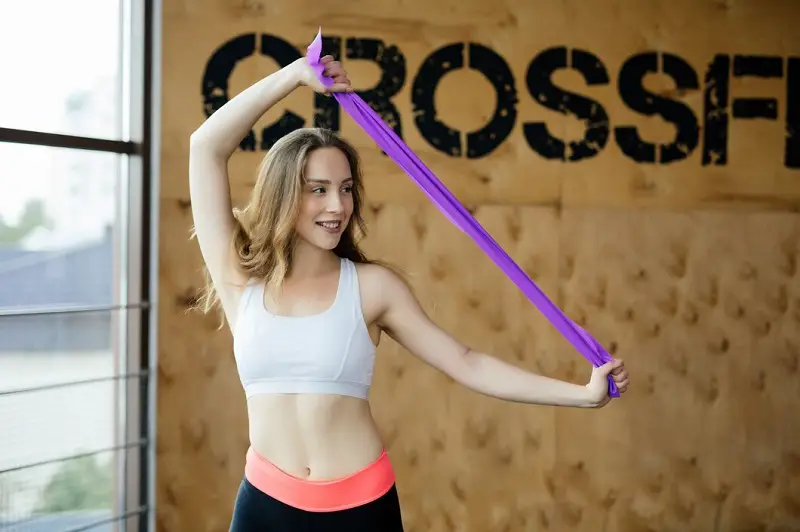
Tips for Safely Executing Pilates Bar Exercises
Proper execution of Pilates Bar exercises is crucial to maximize the benefits and prevent injuries. Here are some tips to ensure safe and effective workouts.
Importance of Proper Form and Technique
Maintaining proper form and technique during the workout is paramount. It not only ensures that the intended muscles are being targeted but also reduces the risk of injury. It’s important to keep your body aligned properly, concentrate on your breathing, and move in a controlled manner.
Common Mistakes to Avoid
There are some common mistakes people tend to make while performing Pilates Bar exercises. These include rushing through the movements, not engaging the core, and incorrect alignment. Avoid these mistakes to ensure you get the most out of your workout and prevent potential harm to your body.
Listening to Your Body and Avoiding Overexertion
While it’s important to push yourself during workouts, it’s equally essential to listen to your body. If you feel any discomfort or pain during an exercise, it’s a sign that you may be overexerting yourself or performing the movement incorrectly. Take a break when needed and adjust your form or the exercise as necessary.
Consulting a Professional if Needed
If you’re new to Pilates Bar exercises or have certain health considerations, it’s advisable to consult with a trained professional. They can guide you through the exercises, correct your form, and tailor a routine that fits your needs and abilities.
Incorporating Variety and Progression
Variety and progression are key elements of an effective workout routine. They not only keep your workouts interesting but also ensure sustained progress towards your fitness goals.
Importance of diversifying workouts
Diversifying your workouts keeps them exciting and reduces the risk of burnout. By mixing up your exercises, you continue to challenge different muscle groups, which can lead to improved overall fitness. Variety in your workouts can also help bypass the plateau effect, where your progress stalls due to your body’s adaptation to repetitive exercise.
Gradually increasing difficulty
Gradual progression is crucial to ensure continuous improvement and avoid injuries. As your strength and endurance improve, gradually increasing the intensity of your workouts can help keep your progress on track. This could involve increasing the resistance of your Pilates Bar, adding more reps, or incorporating more challenging exercises into your routine.
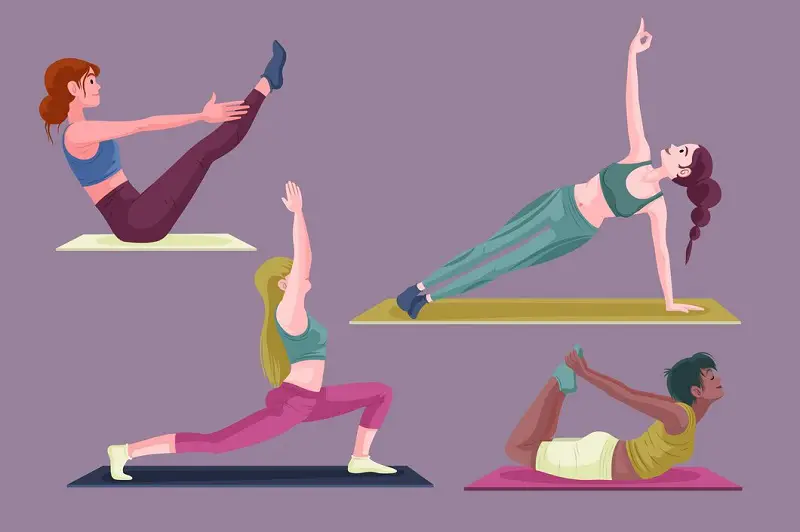
Adding variations to avoid monotony
Adding variations to your exercises can keep your workouts from becoming monotonous. This could be as simple as changing the order of your exercises, using the Pilates Bar differently, or trying new movements. This not only keeps your workouts interesting but also ensures that you continue to challenge your body in different ways. Remember, the key to a successful fitness journey is to keep it enjoyable and motivating.
Conclusion
In conclusion, Pilates Bar Workout Chart exercises offer a versatile and effective workout option that can be customized to various fitness levels and goals. Proper form, technique, and listening to your body are essential for safe and productive workouts. Avoid common mistakes and consult a professional if needed. Incorporating variety, and progression, and keeping track of your progress will help ensure you stay motivated and continue advancing toward your fitness goals. Utilize the wealth of digital resources available to enhance your workouts and keep them engaging. Remember, the key to a successful fitness journey is consistency, patience, and enjoyment. So, grab your Pilates Bar, and get moving towards your healthier and stronger self.
Frequently Asked Questions
Beginners should start slow, focusing on maintaining proper form and technique. It’s important to engage your core, move in a controlled manner, and take breaks when needed. Consulting a trained professional can also be helpful to guide you through the exercises and tailor a routine to your needs.
Mixing up your exercises is key to keep your workouts interesting and ensure continued progress. While there’s no set rule, changing your routine every 4-6 weeks can be a good way to keep challenging your muscles and avoid the plateau effect.
Absolutely! Pilates Bar exercises can be an excellent addition to your overall fitness routine. They can be paired with cardio exercises for a balanced workout, or with strength training for targeted muscle toning. As always, listen to your body and adjust your workouts according to your needs.

